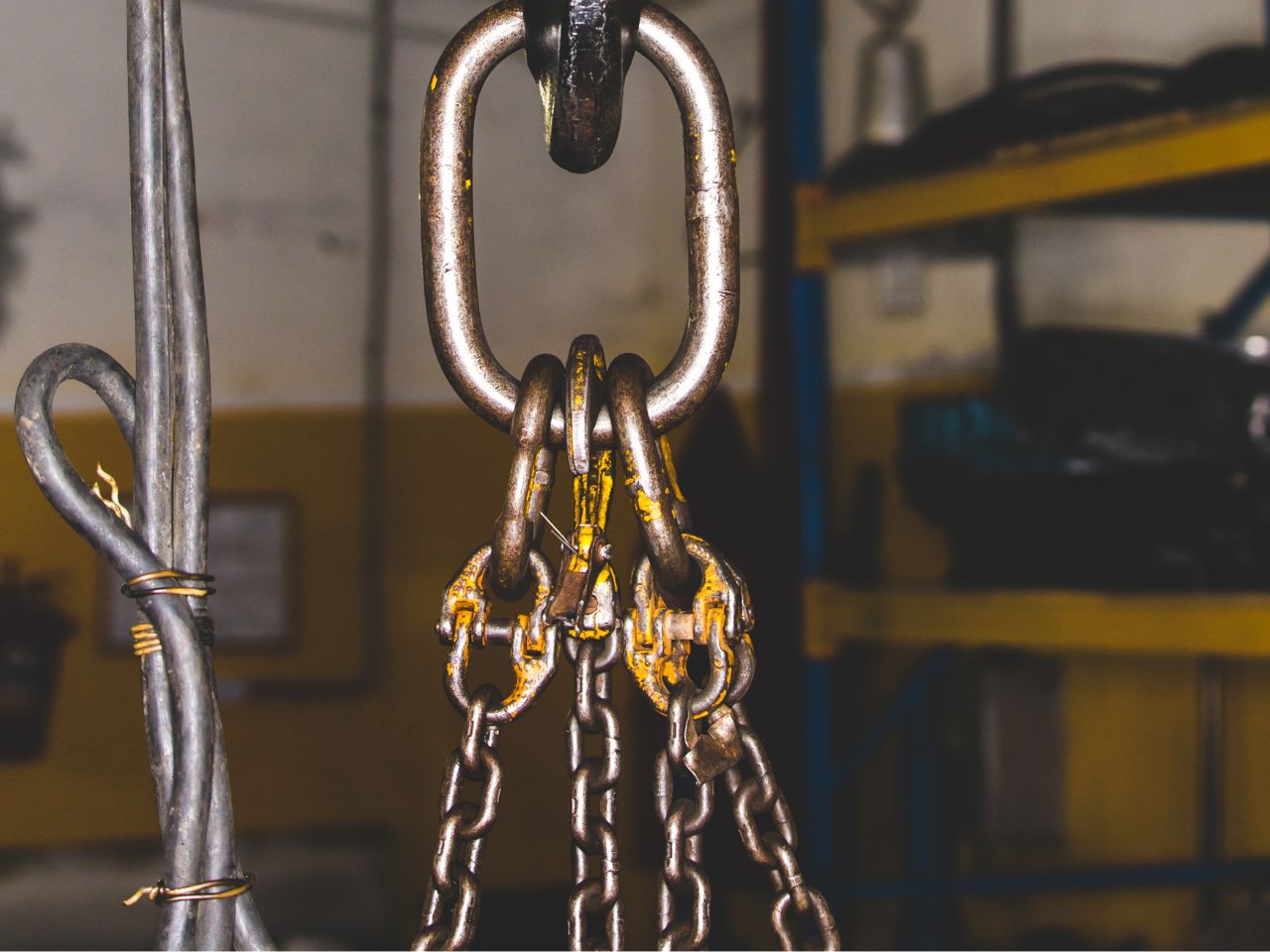A multi-leg sling assembly, often referred to as a multi-leg sling or multi-leg bridle, is a lifting sling configuration consisting of multiple individual sling legs connected to a single attachment point. This type of configuration is commonly used in lifting operations where the load's shape, weight distribution, or other factors require the use of multiple attachment points to ensure stability, even weight distribution, and safe lifting.
Here are some key points about multi-leg sling assemblies:
1. Configuration: A multi-leg sling assembly consists of two or more individual sling legs, each with its own lifting attachment at one end and connected to a common master link, hook, or other lifting device at the other end. The individual legs are typically spaced apart to accommodate the load's shape.2. Load Distribution: Multi-leg slings are used to distribute the load's weight evenly among the multiple legs, preventing imbalanced lifting and reducing stress on individual attachment points. This is particularly useful when lifting irregularly shaped or heavy loads.3. Versatility: Multi-leg slings can adapt to a variety of load shapes and sizes. They are commonly used for lifting items such as machinery, containers, beams, and other objects that require stability during lifting.4. Adjustable Leg Lengths: Some multi-leg sling assemblies allow for the adjustment of individual leg lengths. This adjustability helps accommodate varying load sizes and shapes while maintaining proper weight distribution.5. Rigging Hardware: The master link or lifting device at the top of the multi-leg sling assembly should be rated for the combined load of all the legs. This hardware plays a critical role in ensuring the assembly's safety and integrity.6. Lifting Angle Consideration: The angle at which the individual sling legs are attached to the lifting device affects the load's effective weight on each leg. The sling's Working Load Limit (WLL) may need to be adjusted based on the angle of the legs, as specified by manufacturer guidelines or industry standards.7. Safety and Training: Using multi-leg sling assemblies requires proper training and understanding of factors like load calculation, angle adjustment, and sling positioning. Ensuring the assembly's safety involves proper rigging practices and compliance with relevant safety regulations.8. Material and Construction: Multi-leg sling assemblies can be made from various materials, including chain, wire rope, or synthetic webbing or roundslings. The choice of material depends on factors such as load weight, environment, and load protection requirements.
When using a multi-leg sling assembly, it's important to adhere to manufacturer instructions and safety guidelines, and to calculate the appropriate Working Load Limit (WLL) for the lifting operation based on the angle of the sling legs. Proper inspection, maintenance, and training are crucial to ensure safe lifting practices and prevent accidents. Always follow industry standards and regulations related to lifting and rigging operations.



